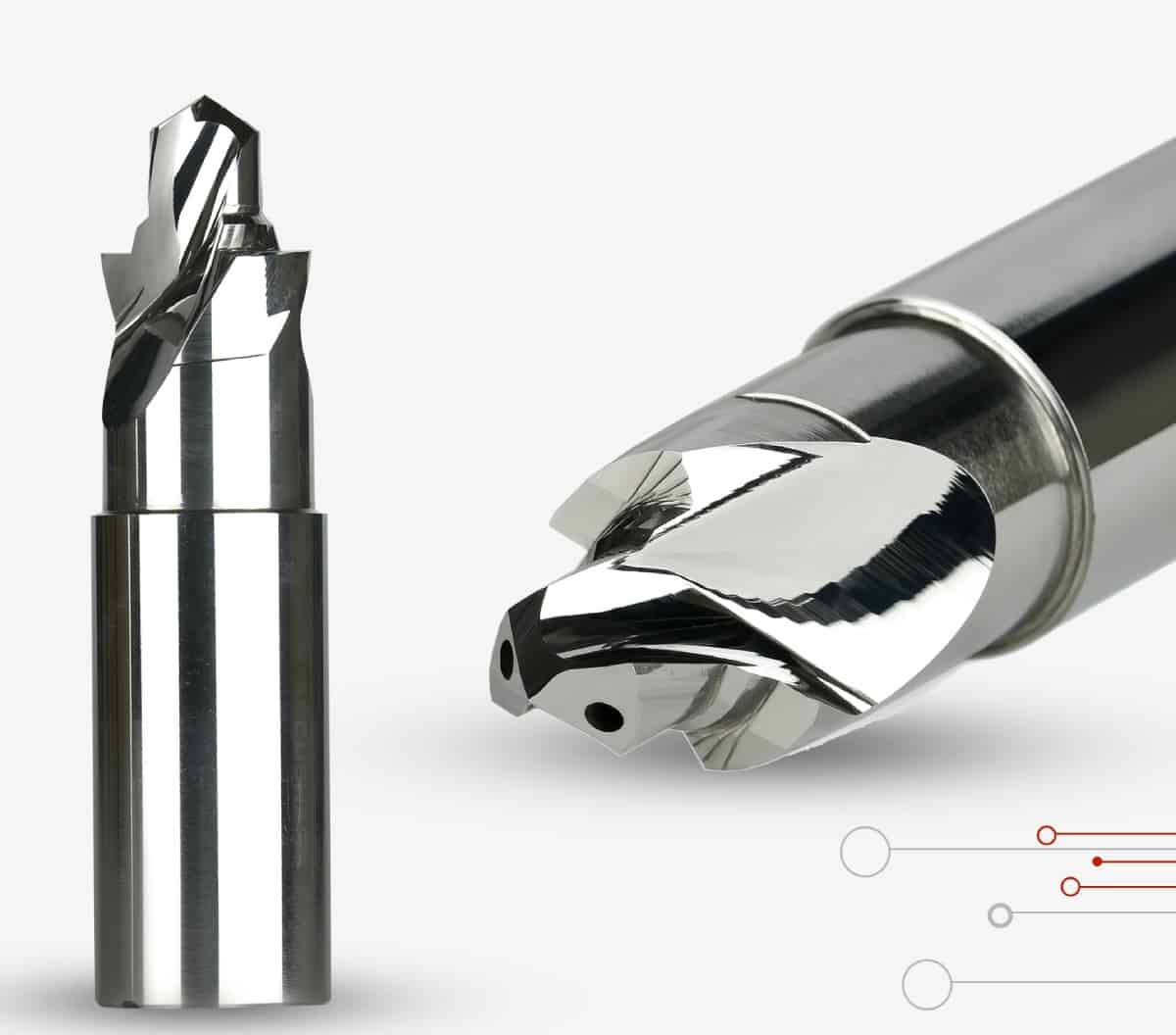Drill bits exist in a variety of shapes and sizes, as well as different materials and coatings. A drill bit tailored specifically for the task is used in almost all tooling and machining processes.
Drill bits allow you to get the most out of your tool. They’re constructed of various materials, and each drill bit is designed to do a certain task. Selecting the proper drill bit that is selected for the task is crucial for certain tooling requirements. Understanding the various types of drill bits, the materials used to create them and the design variations is crucial in making informed judgments when selecting the best drill bit for your work.
Drill Bit Materials:
Drill bits are made of high-speed steel (HSS), cobalt (HSCO), and carbide. Each one caters to a particular set of needs.
- High-Speed Steel(HSS)
High-speed steel drill bits are used to drill into soft steel, plastic, and wooden materials. For the vast majority of drilling applications, it is the drill bit of choice.
- Carbide
Carbide is the most durable drill bit material, yet it is also the most brittle. These drill bits are ideal for drilling through the most difficult materials. They should not be used in hand drills or drill presses. Carbide
Drill bits keep their edges for longer because they dissipate heat more quickly. They are, however, a little more expensive and less durable.
You should avoid using carbide drill bits until you’ve gained more experience. Otherwise, by exerting too much effort, you risk shattering the drill bit.
- Cobalt(HSCO)
Because it can drill precise holes into tougher steel and softer stainless steel materials, cobalt drill bits are preferred over high-speed steel drill bits.
Cobalt drill bits are required for drilling thick steel and metal. Other drill bit materials simply cannot bore through them as successfully as diamond drill bits.
Cobalt drill bits, like carbide drill bits, are more prone to inadvertent damage if you use too much force. Although they can quickly cut through thick materials such as thick steel and metal, as well as stainless steel, you should operate the drill with caution.
- Low Carbon Steel
Low carbon steel drill bits are perfect for minor and beginning DIY tasks. They’re ideal for use on soft surfaces such as wood. They’re also quite inexpensive, which makes them ideal for drilling through materials that aren’t as rigid as metal or hardwood.
- High Carbon Steel
High carbon steel drill bits are a fantastic alternative if you want a bit more holing strength and force than low carbon steel drill bits. Drill bits made of high carbon steel are more durable and can withstand greater temperatures.
They also don’t need to be sharpened on a regular basis. In fact, most users say that they just replace their high carbon steel drill bits as they become dull, as they are not very expensive and are potentially just as cost-effective as low carbon steel drill bits.
- Diamond
Drilling on materials like thin metal and hardwood should be done using high carbon steel drill bits. It’s not the same as high-speed steel, which is mostly utilized in tool manufacturing.
- Drill Bit Length
You can choose drill bits with shorter or longer lengths depending on the job’s accuracy and precision requirements. Drilling precision is possible with shorter drill bits. They don’t degrade quickly and may be used for extended periods of time, even in cramped spaces.
It’s a smart alternative if a shorter drill bit can accomplish the job. Shorter drill bits are more accurate and less likely to break because they are stiffer. This keeps staff focused and the project on track. In tighter, more limited spaces, shorter drill bits are also preferable.
The drill bit size should also correspond to the thickness of the project’s construction. Furthermore, the size will decide the size of the hole you will bore through the material, so be cautious.
Other Ways to choose Right Drill Bit
You can choose drill bits based on the coating as well as the surface material
Coating is used on drill bits for a variety of reasons. Drill bits, on the other hand, are usually coated to make them tougher, sharper, and stronger.
As a result, their use is more diverse and wide, as well as more effective Furthermore, coated drill bits tend to last longer, are more resilient, and can bore through materials far better than conventional drill bits.
- Drill Bits Coatings
For greater wear resistance, drill bits are coated with TiCN (titanium carbonatite, blue-gray hue) and Black Oxide (surface treatment) for non-ferrous materials. The black oxide treatment aids in reducing friction and improving chip flow.
Black Oxide
Steel and iron are the most common uses for black oxide coating. They’re used to improve the tempering power of drill bits and reduce the stress placed on the surface material during the drilling process.
Black oxide also aids in the lubrication of the drill bit, as well as the reduction of chip welding and galling.
Black Oxide (surface treatment) aids in chip flow by reducing friction. Nonferrous materials are not allowed.
Among coated drill bits, black oxide coated drill bits are the most cost-effective.
Bronze Oxide
Cobalt Steel is generally used in conjunction with Bronze Oxide coating. The extra coating reduces the stress exerted to the surface material while simultaneously enhancing the drill bit’s tempering power.
Drill bits used for cobalt steel applications are frequently coated with bronze oxide.
Titanium Nitride
TiN (titanium nitride, gold colour) drills can be run quicker and have a longer tool life than uncoated drills.
Titanium Nitride coating is an expensive coating that extends the life of drill bits while also making them more heat resistant and tougher.
Even when drilling through materials that aren’t recognized for being particularly hard, this type of coating is placed to drill bits.
Zirconium Nitride
Zirconium Nitride coating decreases friction and improves the drilling strength of brittle drills while also making them more heat resistant. It’s designed for accurate drilling applications.
Coatings of zirconium nitride are commonly applied to fragile and sensitive drill bits to reduce the risk of damage due to inappropriate handling.
The Drill Bit Points Shape, Edge or Angle.
The angle or edge of the drill bit point, in addition to the material utilized for the drill bit and coating, can determine how well it penetrates materials.
Harder materials benefit from flatter points, whereas softer materials benefit from steeper points. Drill bits with split tips, on the other hand, are best for precision applications.
This is due to the bit’s design, which keeps it from migrating into another drilling point area even if you don’t use much force to keep it in place.
Any project or application requires careful selection of the appropriate drill bit for the job. The proper decision may increase the life of your drill bits, whether it’s matching the appropriate bit to the substrate material, having the right fit for the depth and diameter of the hole, or even the volume of work required. As a result, you’ll be able to get more done with each drill bit, increasing productivity.
Investing in drill bits that complement your project requirements can help you increase efficiency. Selecting the correct drill bit can also help to extend the tool’s life by increasing its performance without placing the equipment under unnecessary stress.
The use of the incorrect drill bit results in additional and unneeded labour. It will effectively squander both your time and money by forcing you to put in more effort on your job when you might have completed it with less effort.
When you don’t have to use much pressure to bore a beautiful and clean hole, you know you’re using the correct kind of drill bit for the job. It’s critical to select the correct drill bit for both safety and efficiency reasons.
Hopefully, after reading this post, you now understand how to select the appropriate drill bit for a given material.


